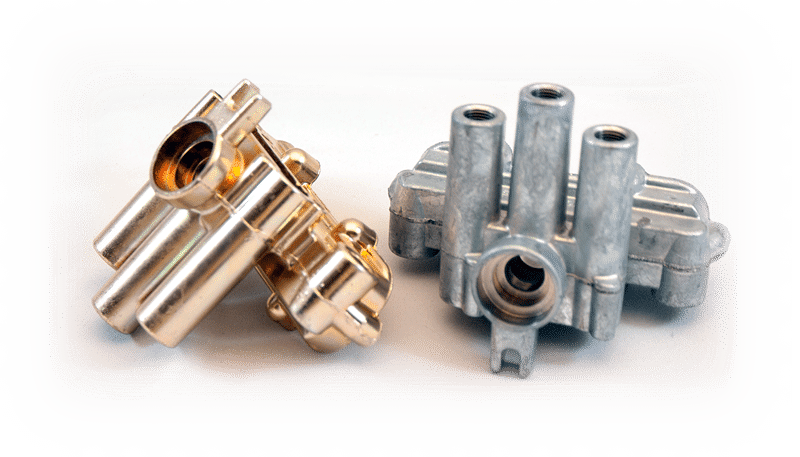Manufacturing is an industry that is critical to the success of the global economy. With increasing demand for high-quality products, it is essential that manufacturers maintain high standards of quality control to ensure their products meet customer expectations. This article outlines the importance of quality control in manufacturing and the best practices that manufacturers can use to achieve it. We also explore how software can help with manufacturing quality control and the difference between quality control and quality assurance.

Importance of Quality Control in Manufacturing
Quality control (QC) in manufacturing plays a critical role in ensuring that products meet required quality standards, resulting in higher customer satisfaction and brand perception. A robust QC program can impact cost and on-time delivery significantly by reducing defects, increasing efficiency, and ensuring compliance.
Without proper QC, factories may produce higher scrap levels and incur increased labor costs from extra handling and rework, throwing off the performance and accuracy of the supply chain. Inaccurate QC may also lead to more customer returns, resulting in a lower rate of repeat customers.
One of the benefits of quality control is that it acts as the last line of defense for customer satisfaction, and with accurate QC, defects can be detected and addressed early on, reducing the costs associated with recalls and warranty claims.
Furthermore, QC validates a company’s processes, ensuring that production systems work well. If defects are detected, it may indicate a broken process in the production chain, and formal process improvement methodologies like Lean can be employed to improve performance and lower defects.
Best Practices for Quality Control in Manufacturing
Manufacturers can implement a range of be
Manufacturers can implement a range of best practices to achieve quality control in manufacturing, including:
1. Develop a Quality Control Plan
Manufacturing companies must develop a quality control plan that outlines the process for ensuring product quality. The plan should include guidelines for quality control checks, sampling procedures, and product testing. A well-structured quality control plan helps ensure consistency and accuracy in the manufacturing process.
2. Conduct Regular Audits
Regular audits help identify potential problems in the manufacturing process. It is essential to conduct audits regularly to ensure that manufacturing processes are running smoothly and to identify any deviations from the plan. By conducting regular audits, manufacturing companies can identify and correct problems early, reducing the likelihood of defects in products.
3. Train Employees
Training employees in quality control procedures is critical to ensure that products meet the desired quality standards. All employees involved in the production process should receive adequate training in quality control techniques, including inspection, testing, and auditing.
4. Use Statistical Process Control (SPC)
Statistical Process Control (SPC) is a method used in manufacturing to monitor and control the production process. SPC uses statistical methods to analyze data and identify trends and patterns that indicate when the manufacturing process is not working correctly. Using SPC can help identify problems early and prevent defects in the final product.
5. Implement Lean Manufacturing
Lean manufacturing is a system that focuses on minimizing waste and maximizing efficiency. Implementing lean manufacturing principles can help manufacturing companies improve their quality control processes. By identifying and eliminating waste in the production process, companies can reduce defects and improve product quality.
6. Establish Performance Metrics
Establishing performance metrics helps manufacturing companies track their progress and identify areas for improvement. Key performance indicators (KPIs) such as defect rates, cycle time, and customer satisfaction should be tracked regularly to ensure that the manufacturing process is meeting the desired quality standards.
7. Collaborate with Suppliers
Collaborating with suppliers can help manufacturing companies ensure that they are receiving high-quality materials and components. By working closely with suppliers, companies can establish quality control standards and ensure that suppliers are meeting these standards.
8. Continuously Improve Quality Control Processes
Continuous improvement is essential in manufacturing. Companies should regularly review and analyze their quality control processes to identify areas for improvement. By continuously improving their quality control processes, companies can ensure that they are producing high-quality products consistently.
How does software help with quality control?
Software can play a significant role in quality control in manufacturing by automating and streamlining many of the processes involved. Quality control software can help manufacturers to:
- Collect and analyze data from across the manufacturing process.
- Identify and track defects and issues.
- Streamline testing and monitoring processes.
- Provide real-time alerts and notifications of potential issues.
- Generate reports and analytics on quality control metrics.
Implementing quality control software can help manufacturers to achieve higher levels of quality control while reducing costs and improving efficiency.
Quality control vs. quality assurance
While often used interchangeably, quality control and quality assurance are not the same things. Quality control refers to the processes and procedures used to ensure that the final product meets the required quality standards. Quality assurance, on the other hand, refers to the broader set of processes used to ensure that the product meets customer expectations. Quality assurance includes everything from market research and customer feedback to product design and development.
Conclusion
Quality control is an essential aspect of the manufacturing process, and manufacturers must implement best practices to ensure that their products meet the required quality standards. Establishing clear quality standards and procedures, training employees, monitoring and testing, continuous improvement, and effective communication are some of the best practices that manufacturers can use. Quality control software can also help to streamline and automate many of the processes involved in quality control, resulting in higher levels of efficiency and effectiveness.





